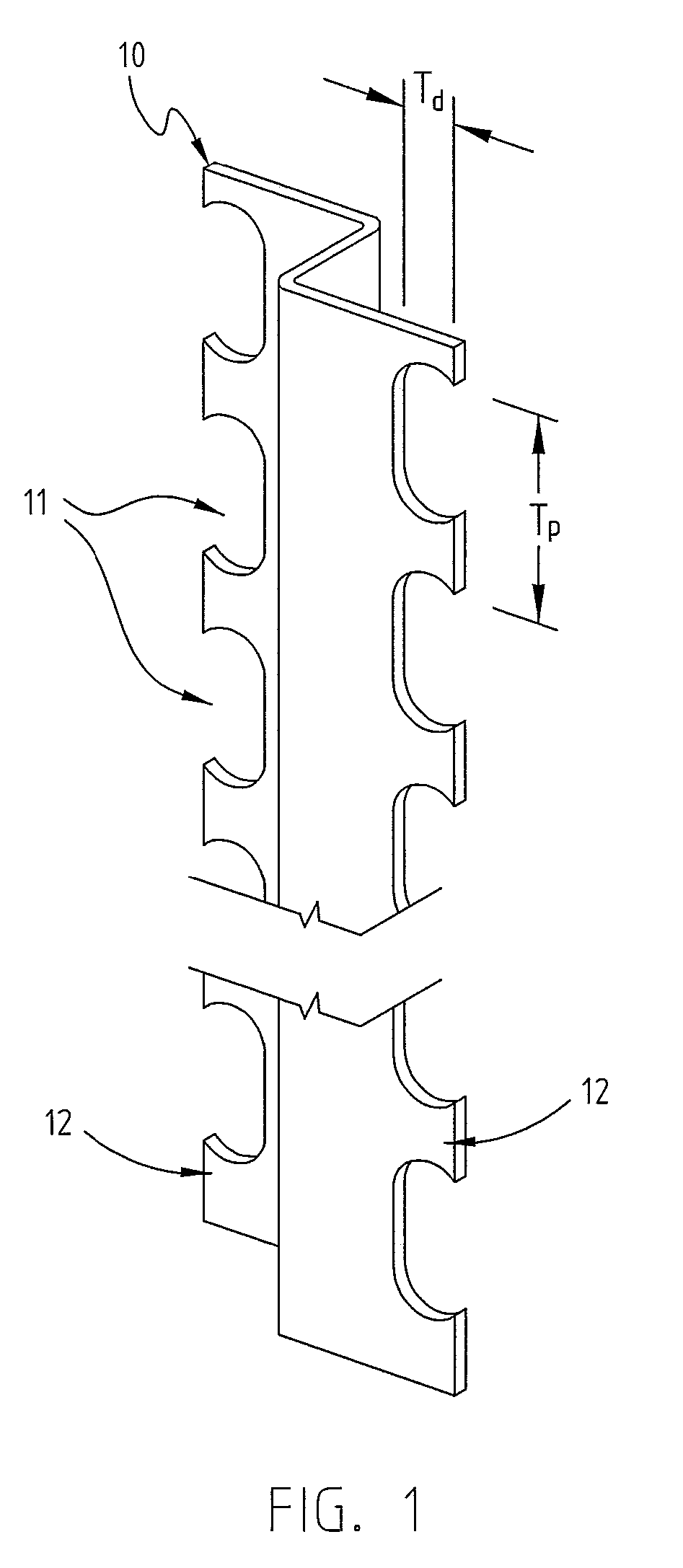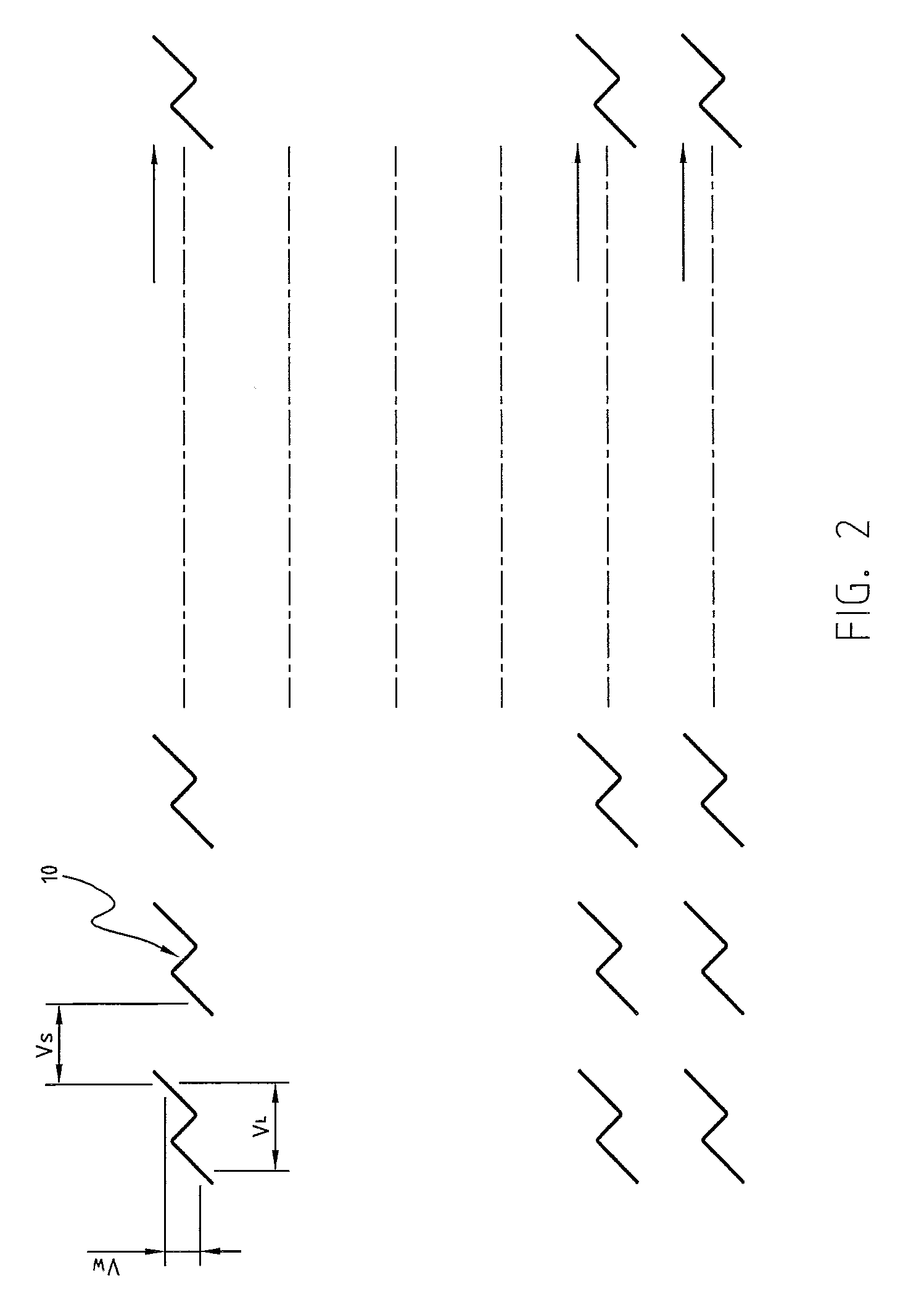Particle Interactions in a Fluid Flow
a fluid flow and particle technology, applied in separation processes, auxillary pretreatment, transportation and packaging, etc., can solve the problems and achieve the effect of increasing the likelihood of collision or interaction between the particles
- Summary
- Abstract
- Description
- Claims
- Application Information
AI Technical Summary
Benefits of technology
Problems solved by technology
Method used
Image
Examples
Embodiment Construction
[0052]In a preferred embodiment, this invention involves the use of turbulent eddies to manipulate the relative trajectories of very small pollutant particles and larger collector particles carried by a flowing fluid, which is typically an exhaust gas stream from an industrial process, to increase the probability of the particles colliding or interacting to agglomerate, or otherwise react with each other, to form more easily removable particles. A formation is designed to provide turbulence of the required size and scale to cause the different species of particles to have substantially differential slip velocities.
[0053]The turbulence should be such that the Stokes Number (St) of the small pollutant particles is much less than 1 (St>1).
[0054]The Stokes number (St) is a theoretical measure of the ability of a particle to follow a turbulence streamline. The Stokes number is defined as the ratio of the particle response time to a fluid flow time and is characterised by:
St=τp / τf=ρpU dp2...
PUM
| Property | Measurement | Unit |
|---|---|---|
| time | aaaaa | aaaaa |
| diameter | aaaaa | aaaaa |
| diameter | aaaaa | aaaaa |
Abstract
Description
Claims
Application Information
 Login to View More
Login to View More - R&D
- Intellectual Property
- Life Sciences
- Materials
- Tech Scout
- Unparalleled Data Quality
- Higher Quality Content
- 60% Fewer Hallucinations
Browse by: Latest US Patents, China's latest patents, Technical Efficacy Thesaurus, Application Domain, Technology Topic, Popular Technical Reports.
© 2025 PatSnap. All rights reserved.Legal|Privacy policy|Modern Slavery Act Transparency Statement|Sitemap|About US| Contact US: help@patsnap.com



